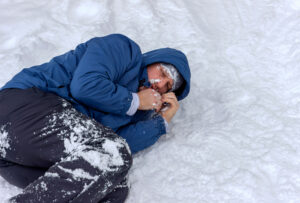Understanding Hypothermia and Its Causes
Hypothermia is a medical emergency where the body’s core temperature drops below the normal 37 degrees Celsius to below 35 degrees Celsius. This drastic decrease impacts vital organ functions and, if untreated, can lead to life-threatening consequences.
How Hypothermia Develops
The onset of hypothermia is marked by the body’s inability to produce heat at a rate that can counteract the heat being lost to the environment. Various factors contribute to this heat loss:
- Convection: Occurs when wind or water flows over the body, stripping away heat.
- Conduction: Happens when direct contact is made with surfaces colder than the body, such as sitting on chilled ground.
- Radiation: The body loses heat to its colder surroundings unless adequately insulated.
- Evaporation: Moisture evaporating from the skin or through respiration also saps warmth from the body.
Types of Hypothermia
“Hypothermia and Its Causes” vary, leading to different forms of the condition:
- Acute Hypothermia: Rapid heat loss, often from immersion in cold water, leading to a quick drop in body temperature.
- Exhaustion Hypothermia: Occurs when physical fatigue prevents the body from generating adequate heat.
- Chronic Hypothermia: Develops gradually in environments with insufficient heating, affecting those with inadequate home heating or outdoor exposure.
Recognising and Responding to Hypothermia
Recognising the early signs of hypothermia is crucial for effective intervention. Symptoms may include shivering, slurred speech, slow breathing, and fatigue. As the condition worsens, shivering might cease, confusion can increase, and consciousness may be lost.
To treat hypothermia, it is vital to warm the individual gradually. Move them to a warm environment, provide dry clothing, and apply warm blankets. Severe cases may require heated IV fluids and hospital care.
Prevention Tips
Preventing hypothermia involves understanding “Hypothermia and Its Causes.” Adequate clothing, staying dry, and limiting exposure to cold, wet, and windy conditions are key preventive measures. Always be prepared with the right gear and knowledge, particularly in environments known for sudden weather changes.
Conclusion
Understanding and preparing for the risks associated with hypothermia are essential, especially for individuals in cold climates or those involved in outdoor activities. Proper planning and education can dramatically reduce the dangers of this potentially fatal condition.



Leave a Reply